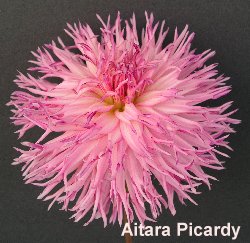
Next meeting:
March 13th, 2007 – Meeting starts promptly at 7:30PM, County Fair Building, 9th and Lincoln
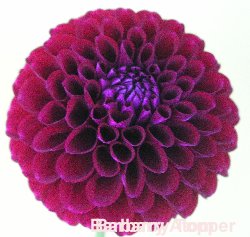
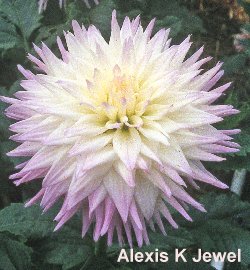 Program:
Dahlia
Culture and the internet. Please bring information about your favorite
sites for purchasing or researching dahlias.
Mini
raffle and expert advice on how to plant cuttings
Program:
Dahlia
Culture and the internet. Please bring information about your favorite
sites for purchasing or researching dahlias.
Mini
raffle and expert advice on how to plant cuttings
IMPORTANT: Cuttings made at the Feb 11 workshop (see below) will be available for sale. Lou indicates quality is excellent. Also, this is the last meeting before the tuber sale, so everyone interested in working the sale should attend the March meeting to sign up and learn about the process.
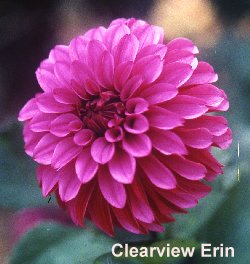
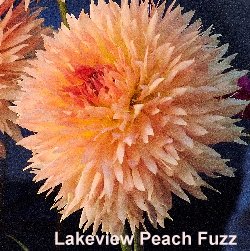
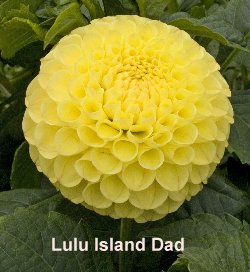
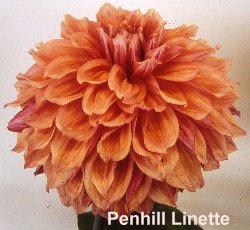
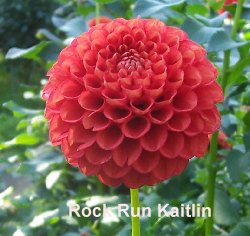
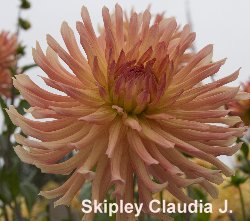
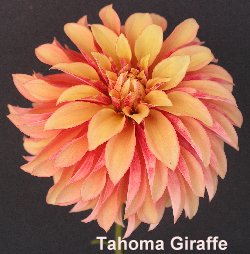 Fab
50 – The Do’s and the Don’ts
Fab
50 – The Do’s and the Don’ts
Many thanks to Frank Avril and Deborah for coordinating an interesting slideshow highlighting a selection of the Fab 50 at the February meeting. A constructive discussion focused on the pros and cons of each flower, with members sharing their experiences on what grows well, blooms well, size of plant, and desirable growing conditions. City dwellers agreed that most A’s and AA’s are difficult and don’t produce abundant blooms. Laciniation can also be a challenge. Others from sunnier and warmer climes reported better luck with large bloom varieties, but conceded that too much sun can fade colors. Although the Fab 50 are the highest scoring dahlias, not all grow perfectly everywhere. Ask other members before you try something new to get feedback on how it grows in certain locations and what their experiences have been
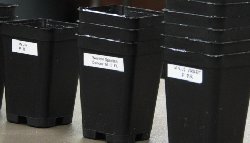
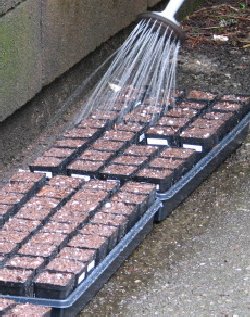




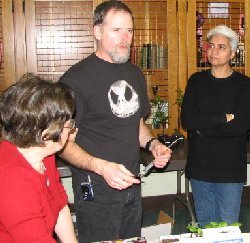
 Cutting
Workshop – It’s Not That Hard, Really
Lou Lombardo coordinated an excellent
workshop to teach attendees all about making cuttings. Surprisingly,
perhaps the most important facet of the process is organization. Lou
makes a full list ahead of time of all the cuttings he plans to take,
makes the labels and tapes them to pots, fills the pots with dirt and
waters them down. One plant can produce ten or more cuttings, depending
on its size, and if the cuttings are removed properly. Clean tools, not
too much rooting hormone and only one set of leaves on the new cutting
(1 –2 sq. inches overall) are all critical as well. Finally, Lou places
all the cuttings in trays and completely encloses them in plastic as
continuous moisture is critical for the new plants to form their own
roots. Many thanks, and congratulations on a job well done, to all the
workshop attendees: D J Ecklebarger, Deborah Dietz, Jamie O'Brien, Joe
Norton, John Dale, Mina Johal, Paula Raffe, Rose Marr, Sarah Sweetwood,
and Michael Gesundheit, a very welcome member of the JES Society.
Cutting
Workshop – It’s Not That Hard, Really
Lou Lombardo coordinated an excellent
workshop to teach attendees all about making cuttings. Surprisingly,
perhaps the most important facet of the process is organization. Lou
makes a full list ahead of time of all the cuttings he plans to take,
makes the labels and tapes them to pots, fills the pots with dirt and
waters them down. One plant can produce ten or more cuttings, depending
on its size, and if the cuttings are removed properly. Clean tools, not
too much rooting hormone and only one set of leaves on the new cutting
(1 –2 sq. inches overall) are all critical as well. Finally, Lou places
all the cuttings in trays and completely encloses them in plastic as
continuous moisture is critical for the new plants to form their own
roots. Many thanks, and congratulations on a job well done, to all the
workshop attendees: D J Ecklebarger, Deborah Dietz, Jamie O'Brien, Joe
Norton, John Dale, Mina Johal, Paula Raffe, Rose Marr, Sarah Sweetwood,
and Michael Gesundheit, a very welcome member of the JES Society.
 Cutting
Workshop #2 on March 10
Lou will conduct another workshop on March 10 and
still has room anyone who hasn’t signed up but would like to attend. As
the February participants can attest, this is a fun, hands-on, highly
informative session where you can learn how to make perfect cuttings and
much more. The workshop will be held March 10, 9am-4pm at the Lakeside
Presbyterian Church at 201 Eucalyptus in San Francisco (cross St 19th
Avenue). Please contact Lou Lombardo as soon as possible to sign up or
for more information. Lou@trgn.com
Cutting
Workshop #2 on March 10
Lou will conduct another workshop on March 10 and
still has room anyone who hasn’t signed up but would like to attend. As
the February participants can attest, this is a fun, hands-on, highly
informative session where you can learn how to make perfect cuttings and
much more. The workshop will be held March 10, 9am-4pm at the Lakeside
Presbyterian Church at 201 Eucalyptus in San Francisco (cross St 19th
Avenue). Please contact Lou Lombardo as soon as possible to sign up or
for more information. Lou@trgn.com
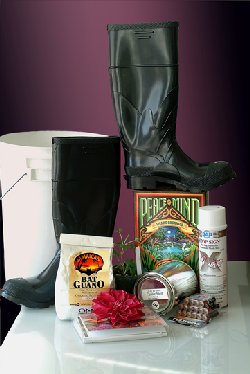
 Pacific
Southwest Conference Notes
Several members of the SF society were
in attendance at this year’s PSW Conference, including the Juuls, Lou
Paradise, Frank Schulkin, Tinnee Lee and Lou Lombardo. At Saturday’s
general session, key topics under discussion included possible monetary
incentive for seedling growers, holding judging seminars at actual
shows, nematodes and their usefulness, and a proposed change in the
overall varietal numbering systems that is being led by Lou Lombardo and
supported by Lou Paradise.
Pacific
Southwest Conference Notes
Several members of the SF society were
in attendance at this year’s PSW Conference, including the Juuls, Lou
Paradise, Frank Schulkin, Tinnee Lee and Lou Lombardo. At Saturday’s
general session, key topics under discussion included possible monetary
incentive for seedling growers, holding judging seminars at actual
shows, nematodes and their usefulness, and a proposed change in the
overall varietal numbering systems that is being led by Lou Lombardo and
supported by Lou Paradise.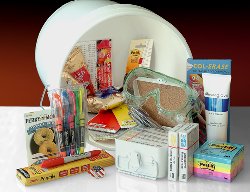
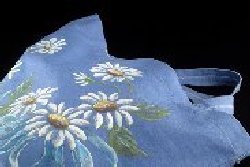 The
group decided to conduct trials of the new system at regular and mini
shows this year. On Sunday, Lou Paradise conducted an excellent judging
seminar outlining a general approach and the key issues to be
considered, including color, form integrity, stem, bloom position,
foliage, and uniformity (for multiple bloom entries). The Saturday
evening banquet was excellent and innumerable prizes were given in the
raffle. Beautiful corsages were made by Matt Zemny and the lovely
orchids were donated by Ozzie.
The
group decided to conduct trials of the new system at regular and mini
shows this year. On Sunday, Lou Paradise conducted an excellent judging
seminar outlining a general approach and the key issues to be
considered, including color, form integrity, stem, bloom position,
foliage, and uniformity (for multiple bloom entries). The Saturday
evening banquet was excellent and innumerable prizes were given in the
raffle. Beautiful corsages were made by Matt Zemny and the lovely
orchids were donated by Ozzie.
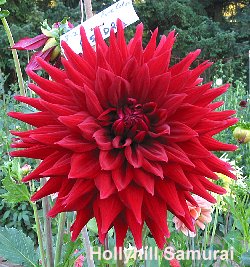 Reminders
Reminders
KQED Event March 10 Don’t miss the CELTIC Irish dance performance as part of the KQED fund drive on March 10 from 6-10PM.
2007 San Francisco Flower and Garden Show is March 22-25 at the Cow Palace. Several Dahlia vendors will be present, including Corralitos Gardens and Dan’s Dahlias.
2007 Dahlia calendars are still available. Contact Diana Brogoitti bcsclaims@ail.com or come to the next meeting where they will be on sale at a reduced price.
2007 membership fees were due in January. For those who have forgotten to renew, please fill out the form and mail to Diana.
Program ideas – anyone with ideas or suggestions for future meeting programs, please let Tinnee or Frank Shulkin know. Any thoughts? Email Frank at fschulkin@yahoo.com
Park Closure Issue – Rumor has it that the city will once again attempt to close Golden Gate Park to cars on Saturdays in addition to Sundays. Email, call or write your supervisor to express your views!
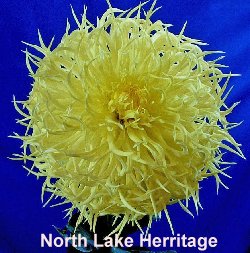
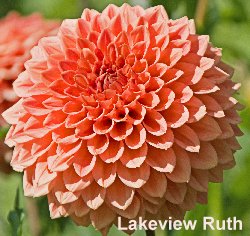
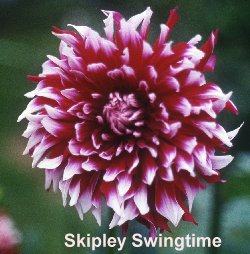
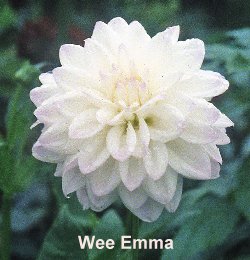
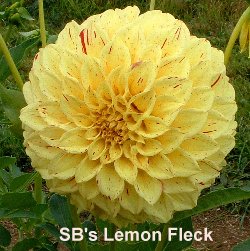
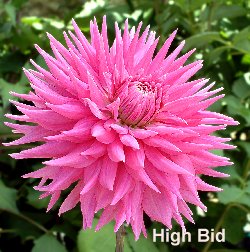
 Indoor
planting gets underway
Many tuber vendors have begun shipping
by now, and new tubers are arriving. Most tubers take at least a few
weeks (and some much longer) to begin sprouting, so start them indoors
in pots, milk cartons or whatever other vessels you have. Potting soil
or soil brought in from the garden should be fine, but be careful that
the soil is not too wet. Germination generally requires a sustained
temperature of at least 60 degrees, so place the pots somewhere that
they will stay warm day and night. Be careful of the sun. I have found
that newly sprung shoots burn up quickly if exposed to direct sunlight
on the windowsill, so I would recommend keeping them out of the direct
light at first, and gradually acclimate them over time.
Indoor
planting gets underway
Many tuber vendors have begun shipping
by now, and new tubers are arriving. Most tubers take at least a few
weeks (and some much longer) to begin sprouting, so start them indoors
in pots, milk cartons or whatever other vessels you have. Potting soil
or soil brought in from the garden should be fine, but be careful that
the soil is not too wet. Germination generally requires a sustained
temperature of at least 60 degrees, so place the pots somewhere that
they will stay warm day and night. Be careful of the sun. I have found
that newly sprung shoots burn up quickly if exposed to direct sunlight
on the windowsill, so I would recommend keeping them out of the direct
light at first, and gradually acclimate them over time.
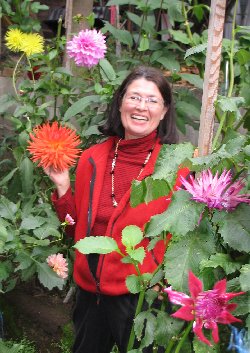 The
Importance of the flower of the year
By Deborah Dietz
The
Importance of the flower of the year
By Deborah Dietz
Why should you grow The Flower of the Year? Each year the dahlia societies choose a special cultivar and encourage all members in the society to grow at least one plant of it. This is a great way of learning several things. Firstly, different soils lead to different plant growth and differences in color. So growing the same dahlia in different gardens produces interesting results. Secondly, we all cultivate our plants a little differently: slightly different fertilizer given in slightly different intervals and perhaps in different forms (granular, dust, liquid, foliar); no insecticides to major prophylactic bombing runs to ward off pests; no fungicide to sulphur to systemic; and lastly we all amend our soil with different trace elements even if it’s just the type of compost we lavish on our lovelies. Then we stake our beauties differently. We disbud and “stop” plants at different times.
All these practices result in marked manifestations of the same germplasm. At the National Show near Seattle, there were almost 100 April Dawns on the Flower of the Year table. What a daunting challenge for eagle-eyed judges! What a treat for the rest of us to see the infinite variations on that one set of chromosomes. Ultimately, the grower who wins Flower of the Year also wins Grower of the Year, because his/her cultivation yielded the healthiest, heartiest, most perfect example. So this year if you only grow two dahlias, please grow at least one Chimacum Julia. Look for the tubers or cuttings at our April sale or check out the catalogs now. Chimacum Julia is a B-sized incurved yellow cactus: utterly breathtaking. She’ll grow from 4’ in the sun to 8 ½’ in my shaded Secret Garden. Show rules demand that if you want to show a Chimacum Julia in any other section of the competition, you must first have a bloom in the Flower of the Year category. Go for it!
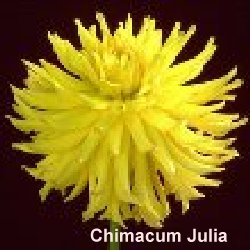
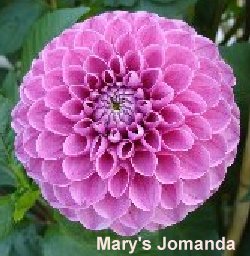
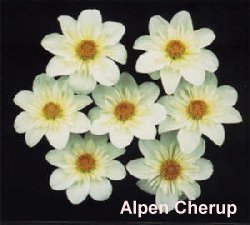
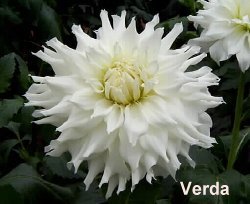
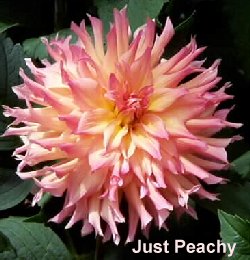
John Stowell Dahlia Society: Mary's Jomanda and Alpen Cherup
Monteray Bay Dahlia Society: Verda
San Leandro Dahlia Society: Just Peachy
From the garden
Joe
 Dahlia
Society of California, Inc., San Francisco, CA
-- Copyrighted
Dahlia
Society of California, Inc., San Francisco, CA
-- Copyrighted
Editor:
Joe Norton
e-Newsletter Editor: Jytte Rasmussen
Acknowledgement: Photos in
this issue by Joe, Tinnee and ADS

